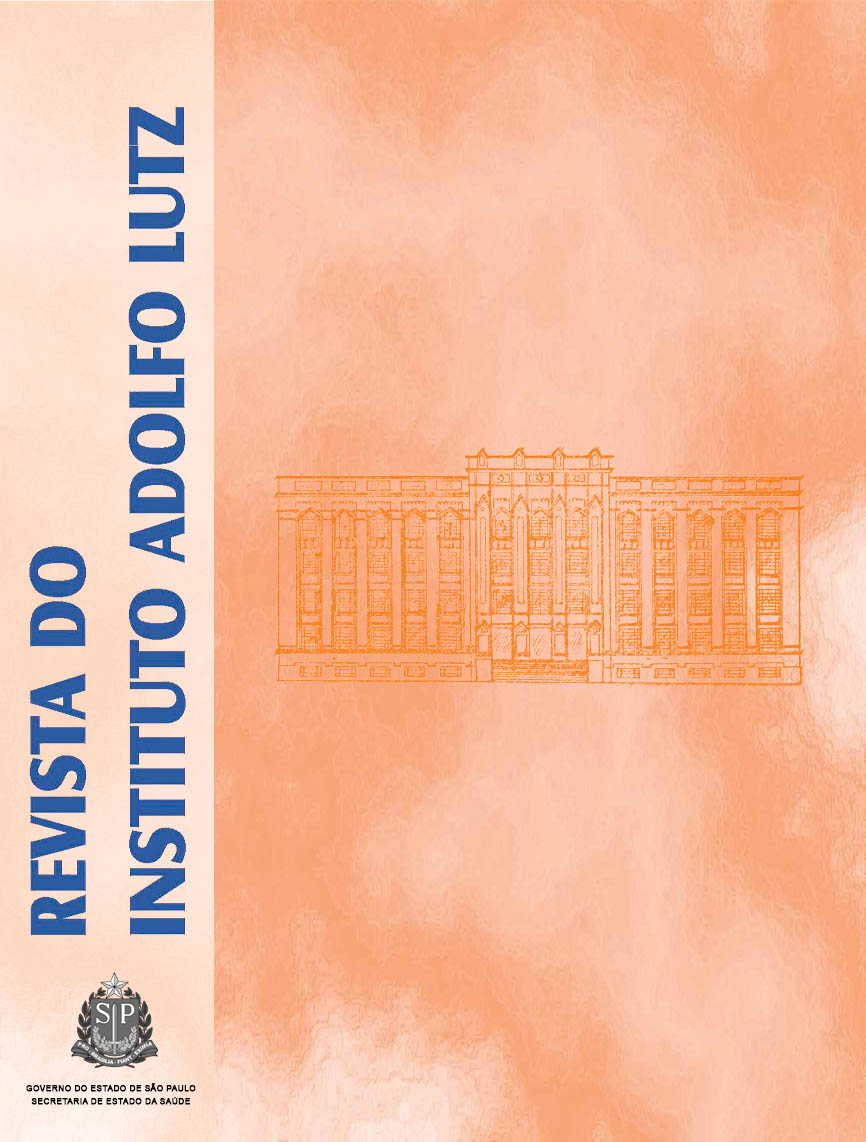Abstract
To detect the potential risk which may interfere on the quality of the water used for dialysis procedure, some assessment parameters have been established led to the definition of for its evaluation, such as the counting of heterotrophic bacteria. Considering that the chosen culture media and the incubation conditions may interfere on the results from microbiological analysis on water for dialysis, the present study evaluated the efficiency of R2A culture medium for performing the heterotrophic bacteria counting. A total of 193 samples of water collected from dialysis clinics located in the city of São Paulo and in other cities of the Grande São Paulo region were analyzed, and also the incubation temperature and the efficiency comparison on bothR2A and PCA media were evaluated. No difference between bacteria counting on R2A medium after 96hincubationat 24oC and 34oC was found. The highest bacteria counting was found on R2A medium (p <0.02), which was considered to be mostly suitable for evaluating the water for dialysis. In order to minimize the risks to the patient under dialysis, the water for dialysis should be carried out by bacteria counting technique on R2A agar because of its high sensitivity, and incubating it for longer incubation times.
References
1. Arvanitidou M, Spaia S, Katsinas C, Pangidis P, Constantinidis T, Katsouyannopoulos V et al. Microbiological quality of water and dialysate in all haemodialysis centres of Greece. Nephrol Dial Transplant. 1988; 13: 949-54.
2. P ontoriero G, Pozzoni P, Andrulli S, Locatelli F. The quality of dialysis water. Nephrol Dial Transplant. 2003; 18 (suppl 7): vii21-5.
3. Silva AMM, Martins CTB, Ferraboli R, Jorgetti V, Romão-Junior JE. Revisão/Atualização em Diálise: Água para hemodiálise. J Bras Nefrol. 1996; 18 (2): 180-8.
4. Varo SD, Martins CHG, Cardoso MJO, Sartori FG, Montanari LB, Pires-Gonçalves RH. Isolamentos e fungos fi lamentosos em água utilizada em uma unidade de hemodiálise. Rev Soc Bras Med Tropical. 2007; 40: 326-31.
5. Vorbeck-Meister I, Sommer R, Vorbeck F, Hörl WH. Quality of water used for haemodialysis: bacteriological and chemical parameters. Nephrol Dial Transplant. 1999; 14: 666-75.
6. Brunet P, Berland Y. Water quality and complications of haemodialysis. Nephrol Dial Transplant. 2000; 15: 578-80.
7. Gomila M, Gascó J, Busquets A, Gil J, Bernabeu R, Buades JM, et al. Identifi cation of culturable bacteria present in haemodialysis water anf fl uid. FEMS Microbiol Ecology. 2005; 52: 101-14.
8. Hoenick NA, Levin R. The implications of water quality in hemodialysis. Semin Dial. 2003; 16 (6): 492-7.
9. Hoenick NA, Ronco C, Levin R. The importance of water quality and haemodialysis fluid composition. Blood Purif. 2006; 24: 11-8.
10. Oie S, Kamiya A, Yoneda I, Uchiyama K, Tsuchida M, Takai K, et al. Microbial contamination of dialysate and its prevention in haemodialysis units. J Hosp Infect. 2003; 54: 115-9.
11. Pérez-Garcia R, Rodríguez-Benitez POC. Why and how to monitor bacterial contamination of dialysate? Nephrol Dial Transplant. 2000; 15: 760-4.
12. Bugno A, Almodóvar, AAB, Pereira TC, Auricchio MT. Detecção de bactérias Gram-negativas não fermentadoras em água tratada para diálise. Rev Inst Adolfo Lutz. 2007; 66 (2): 172-5.
13. Lonnemann G. Assessment of the quality of dialysate. Nephrol Dial Transplant. 1998; 13 (suppl 5): 17-20.
14. van der Linde K, Lim BT, Rondeel JMM, Antonissen LPMT, de Jong GMT. Improved bacteriological surveillance of haemodilysis fl uids: a comparison between Tryptic soy agar and Reasoner’s 2A media. Nephrol Dial Transplant. 1999; 14, 2433-7.
15. Brasil. Ministério da Saúde. Resolução RDC nº154, de 15 de jun. 2004 (versão republicada em 31 de mai. 2006). Estabelece o Regulamento Técnico para funcionamento dos Serviços de Diálise. Diário Oficial [da] República Federativa do Brasil, Poder Executivo, Brasília, 31 mai. 2006. Disponível em: http://e-legis.anvisa.gov.br/leisref/public/showAct.php?id=22875&word.
16. Archibald LK, Khoi NN, Jarvis WR, Reller LB, Cam PD, Thu TA, et al. Pyrogenic reactions in hemodialysis patients, Hanoi, Vietnam. Infect Control Hosp Epidemiol. 2006; 27 (4): 424-6.
17. Reasoner DJ. Heterotrophic plate count methodology in the United States. Int J Food Microbiol. 2004; 92: 307-15.
18. Allen MJ, Edberg SC, Reasoner DJ. Heterotrophic plate count bacteria – what is their signifi cance in drinking water? Int J Food Microbiol. 2004; 92: 265-74.
19. United States Pharmacopeia (US). The United States Pharmacopeia. 31 ed. Rockville: United States Pharmacopeial Convention; 2008.
20. American Public Health Association (US). Standard Methods for the examination of Water and Wasterwater. Baltimore: United Book Press, Inc; 1998.
21. Carter JT, Rice EW, Buchberger SG, Lee Y. Relationships between levels of heterotrophic bacteria and water quality parameters in a drinking water distribution system. Water Research. 2000; 34 (5): 1495-502.
22. Uhl W, Schaule G. Establishment of HPC(R2A) for regrowth control in non-chlorinated distribution systems. Int J Food Microbiol. 2004; 92: 317-25.

This work is licensed under a Creative Commons Attribution 4.0 International License.
Copyright (c) 2009 Instituto Adolfo Lutz Journal
